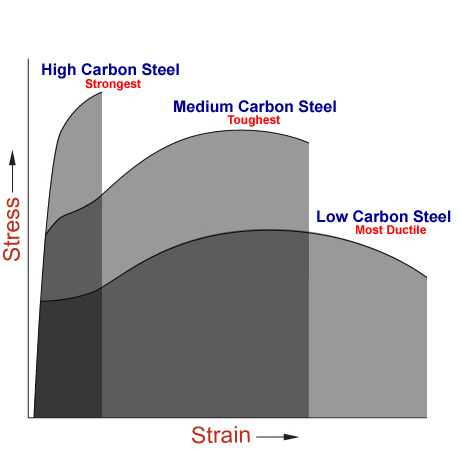Toughness
The ability of a metal to deform plastically and to absorb energy in the process before fracture is termed toughness. The emphasis of this definition should be placed on the ability to absorb energy before fracture. Recall that ductility is a measure of how much something deforms plastically before fracture, but just because a material is ductile does not make it tough. The key to toughness is a good combination of strength and ductility. A material with high strength and high ductility will have more toughness than a material with low strength and high ductility. Therefore, one way to measure toughness is by calculating the area under the stress strain curve from a tensile test. This value is simply called “material toughness” and it has units of energy per volume. Material toughness equates to a slow absorption of energy by the material.

There are several variables that have a profound influence on the toughness of a material. These variables are:
- Strain rate (rate of loading)
- Temperature
- Notch effect
A metal may possess satisfactory toughness under static loads but may fail under dynamic loads or impact. As a rule ductility and, therefore, toughness decrease as the rate of loading increases. Temperature is the second variable to have a major influence on its toughness. As temperature is lowered, the ductility and toughness also decrease. The third variable is termed notch effect, has to due with the distribution of stress. A material might display good toughness when the applied stress is uniaxial; but when a multiaxial stress state is produced due to the presence of a notch, the material might not withstand the simultaneous elastic and plastic deformation in the various directions.
There are several standard types of toughness test that generate data for specific loading conditions and/or component design approaches. Three of the toughness properties that will be discussed in more detail are 1) impact toughness, 2) notch toughness and 3) fracture toughness.